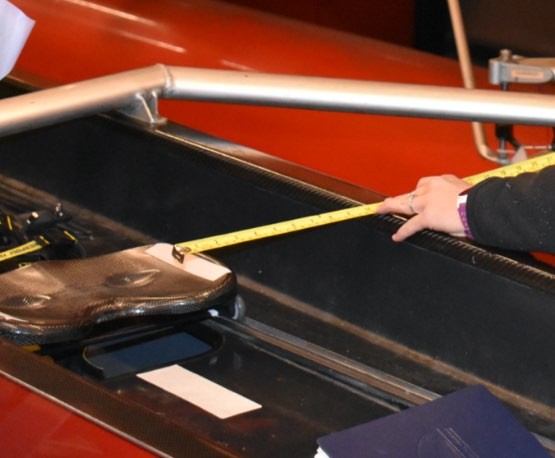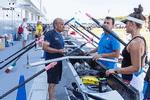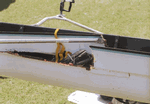
In the third of a series of articles designed to help coaches, athletes, and programs through this extremely rough patch, row2k is working with Mike Davenport to cross-post the information he generates from the effort; this week Mike addresses the basics of the mechanical adjustments to 5 critical elements that play a big factor in how effectively you row AND the physical feel of your rowing.
That is, the five most important Rigging measurements.
5 Critical Elements Of Rowing Leverage
Those 5 critical elements as a group are commonly called "Leverage" and they are the:
- Spread
- Oar Length
- Oar Inboard
- Work Through The Pin
- Blade shape/Oar stiffness
The act of adjusting them is called "Rigging."
And that feeling I mentioned, well that translates to how light-to-heavy it feels when you tug on the oar. That feel is called the Load.
Yes, yes, and yes…there are other factors, such as shoe size, that play a role in how your rowing feels. However that list is the Big 5 as they are ones that have the biggest impact.
To be effective with your Rigging, and rowing equipment, you need to know about those 5 critical elements of rowing leverage and how to measure them.
Here are explanations of the five measurements; Mike shows how to do accurate measurements for each in the full article at How To Measure The 5 Critical Elements Of Rowing Leverage (And Why You Need To Know Them).
A) Spread. Usually measured as the distance from the center of the pin to the centerline of the boat.
B) Length of Oar. This is the distance from the end (butt) of the oar handle to the tip of the blade.

C) Inboard. The Inboard is the length of the oar from the butt of the oar handle to the blade side of the oar’s collar.

D) Work through the pin. This is the distance from a perpendicular line through the pin to the front stops (stern most stops) of the tracks.

D) Work behind the pin. Some coaches and rowers prefer to make the catch the focus of their rigging, and they will use work through the pin as it helps establish catch length and catch angle. However, others prefer focusing their rigging around the finish. In that case you can use work behind the pin, which helps establish finish length and finish angle.
E) Blade Shape/Oar Stiffness. Blade shape is the design of your blade and includes the blade’s surface area along with any design elements to enhance blade performance. Oar stiffness is an option specific to the amount of flex an oar has when under load.

By knowing each of these 5 critical elements of rowing leverage and how to measure them you will gain solid control over both the Leverage and the Load of your rowing equipment.
To learn more about Leverage, Load, and how to adjust them, check out Mike's new online course, Beginning Sweep Rigging, launching in April.
If you enjoy and rely on row2k, we need your help to be able to keep doing all this. Though row2k sometimes looks like a big, outside-funded operation, it mainly runs on enthusiasm and grit. Help us keep it coming, thank you! Learn more.
Comments | Log in to comment |
There are no Comments yet
| |
- Bont Rowing
- Calm Waters Rowing
- Concept 2
- Craftsbury Sculling
- The Crew Classic
- CrewLAB
- Croker
- Dad Vail Regatta
- Durham Boat Co.
- Empacher
- Faster Masters
- Filippi
- Fluidesign
- h2row.net
- HUDSON
- Live2Row Studios
- Nielsen-Kellerman
- Oak Ridge RA
- Peinert Boat Works
- Pocock Racing Shells
- Race1 USA
- RowKraft
- Rubini Jewelers
- Vespoli USA
- WinTech Racing
- Bont Rowing
- Calm Waters Rowing
- Concept 2
- Craftsbury Sculling
- The Crew Classic
- CrewLAB
- Croker
- Dad Vail Regatta
- Durham Boat Co.
- Empacher
- Faster Masters
- Filippi
- Fluidesign
- h2row.net
- HUDSON
- Live2Row Studios
- Nielsen-Kellerman
- Oak Ridge RA
- Peinert Boat Works
- Pocock Racing Shells
- Race1 USA
- RowKraft
- Rubini Jewelers
- Vespoli USA
- WinTech Racing















